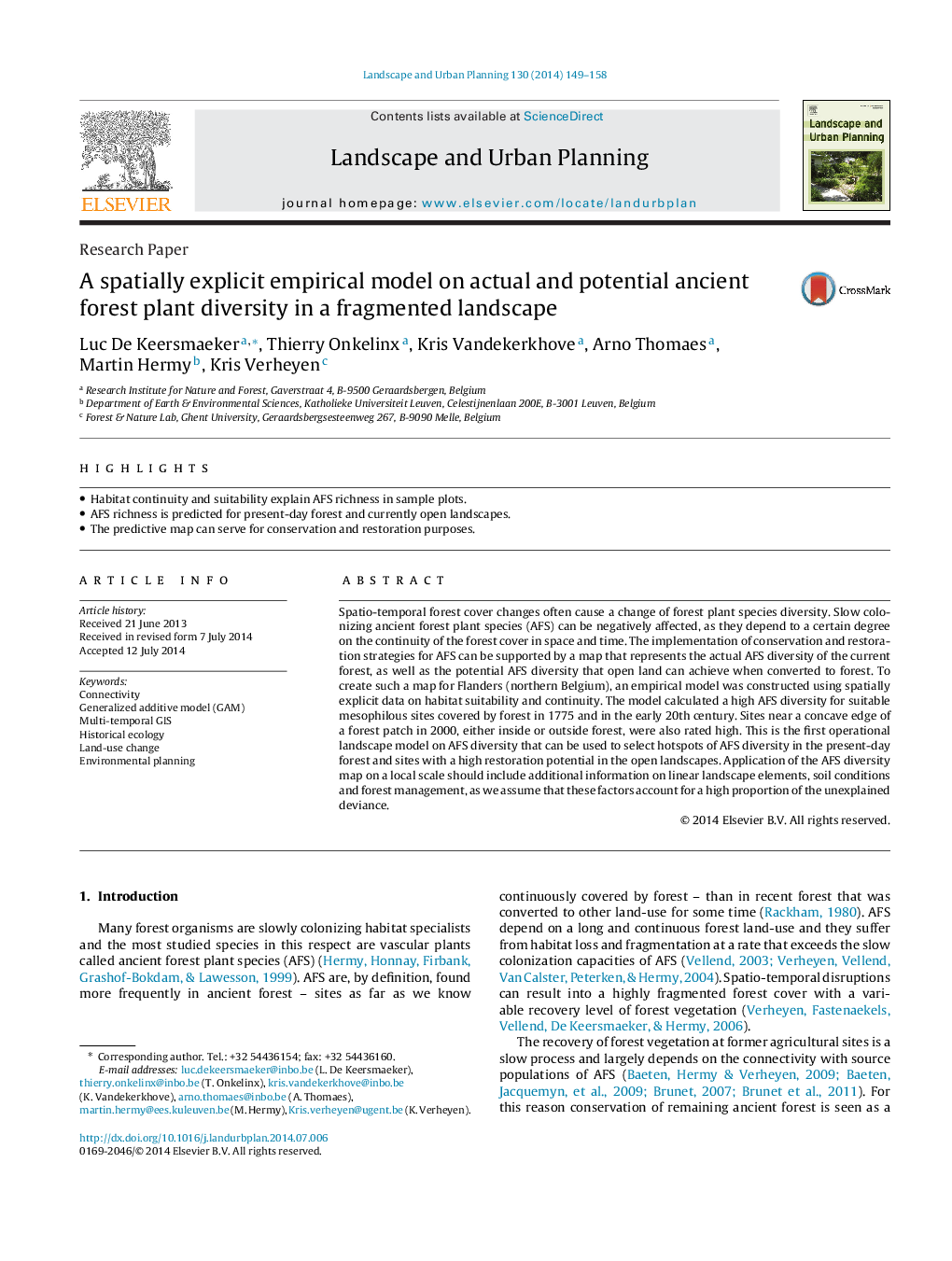| Article ID | Journal | Published Year | Pages | File Type |
|---|---|---|---|---|
| 7461381 | Landscape and Urban Planning | 2014 | 10 Pages |
Abstract
Spatio-temporal forest cover changes often cause a change of forest plant species diversity. Slow colonizing ancient forest plant species (AFS) can be negatively affected, as they depend to a certain degree on the continuity of the forest cover in space and time. The implementation of conservation and restoration strategies for AFS can be supported by a map that represents the actual AFS diversity of the current forest, as well as the potential AFS diversity that open land can achieve when converted to forest. To create such a map for Flanders (northern Belgium), an empirical model was constructed using spatially explicit data on habitat suitability and continuity. The model calculated a high AFS diversity for suitable mesophilous sites covered by forest in 1775 and in the early 20th century. Sites near a concave edge of a forest patch in 2000, either inside or outside forest, were also rated high. This is the first operational landscape model on AFS diversity that can be used to select hotspots of AFS diversity in the present-day forest and sites with a high restoration potential in the open landscapes. Application of the AFS diversity map on a local scale should include additional information on linear landscape elements, soil conditions and forest management, as we assume that these factors account for a high proportion of the unexplained deviance.
Keywords
Related Topics
Life Sciences
Agricultural and Biological Sciences
Ecology, Evolution, Behavior and Systematics
Authors
Luc De Keersmaeker, Thierry Onkelinx, Kris Vandekerkhove, Arno Thomaes, Martin Hermy, Kris Verheyen,
